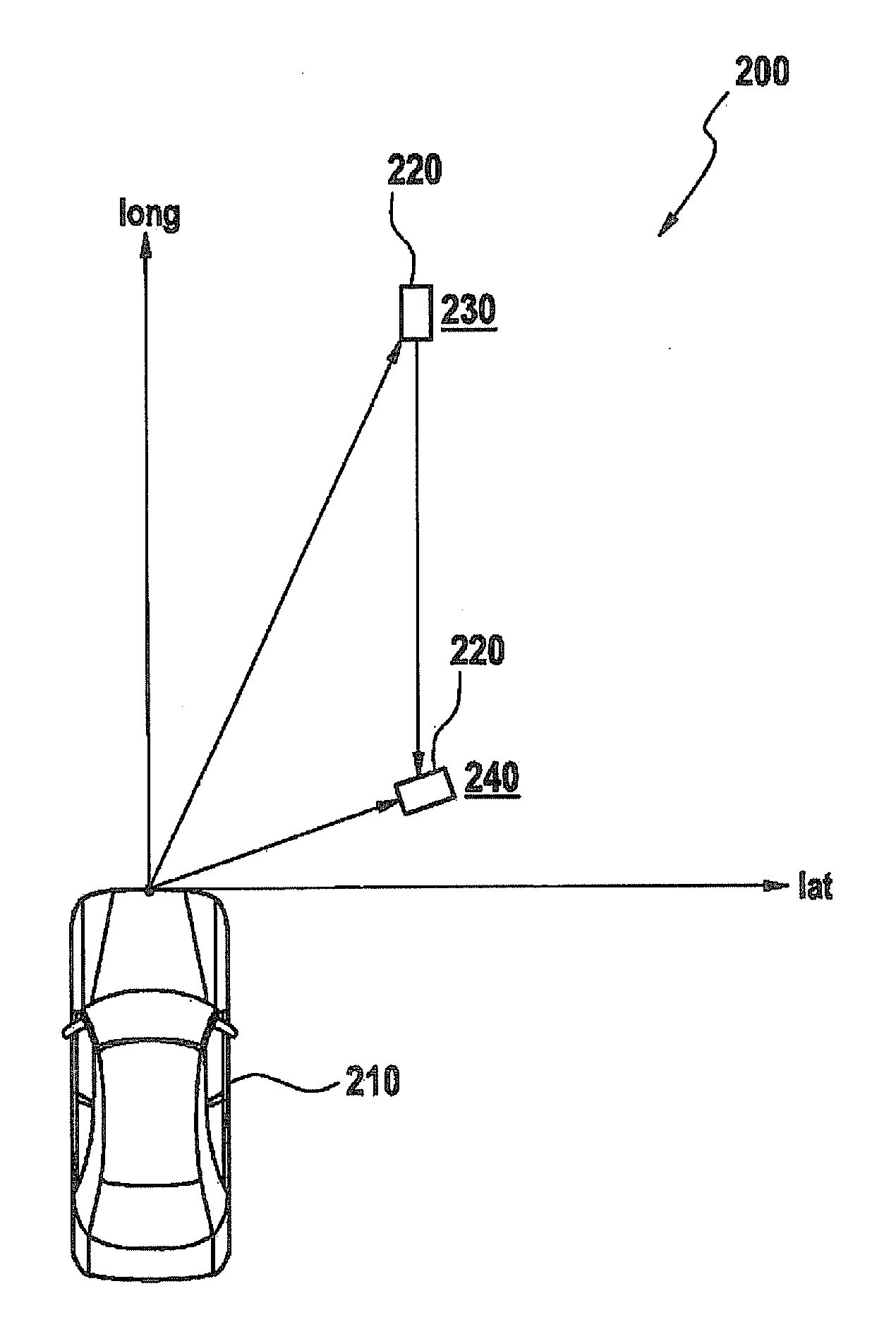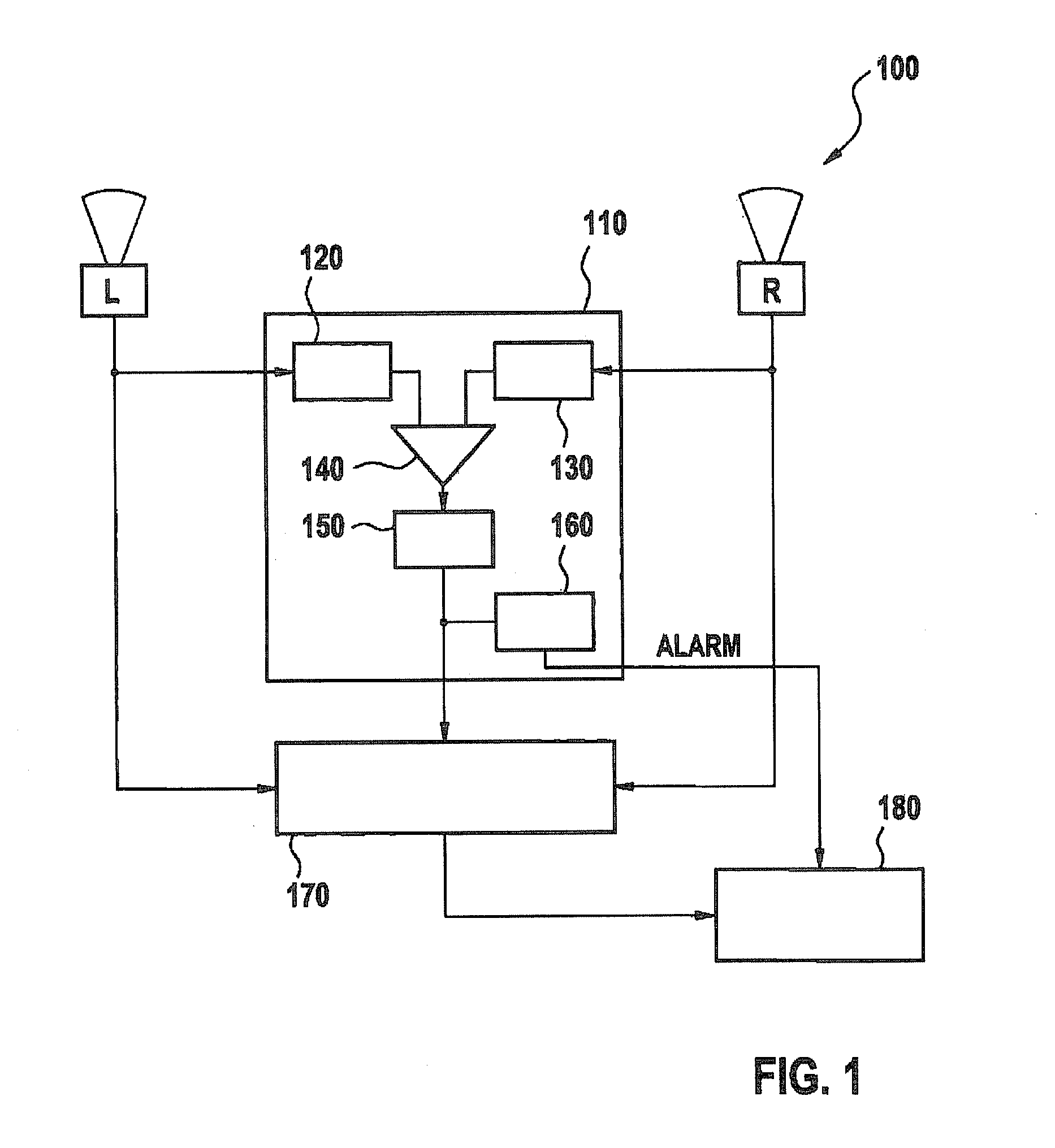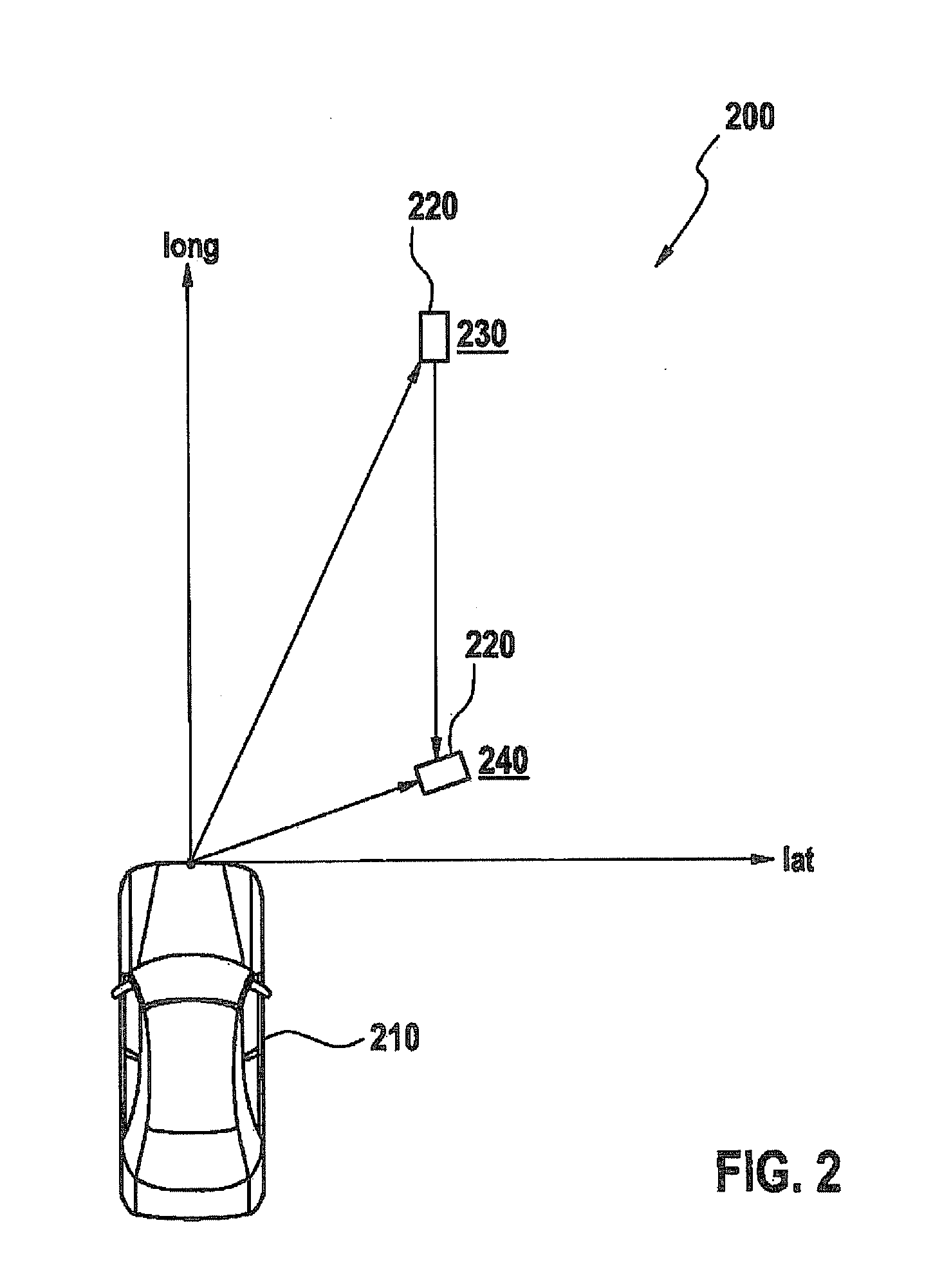Object sensor
a technology of object angle and sensor, which is applied in the direction of mechanical measuring arrangement, using reradiation, instruments, etc., can solve the problems of sensor misalignment, motor vehicle misalignment, and impaired accuracy of object position determination
- Summary
- Abstract
- Description
- Claims
- Application Information
AI Technical Summary
Benefits of technology
Problems solved by technology
Method used
Image
Examples
Embodiment Construction
[0027]Designations for different angles include those below:
directional angle: an angle to the object determined by a sensor L, R.
object angle: the actual angle at which an object appears in a common coordinate system.
angle of misalignment: the angle by which one of sensors L, R is rotated with respect to the common coordinate system.
object hypothesis: the angle of the object determined by the overall system in the common coordinate system.
cross-misalignment angle: the difference of transposed directional angles.
system angle: the difference between the coordinate system formed from the directional angles of the sensors L, R and the coordinate system of the vehicle.
compensation angle: the determined approximation to a misalignment angle.
[0028]FIG. 1 shows a block diagram of a device 100 for determining an object angle having a postconnected driver assistance system 180. In each case, two sensors L and R determine a directional angle of an object (not shown), which is located in a com...
PUM
 Login to View More
Login to View More Abstract
Description
Claims
Application Information
 Login to View More
Login to View More - R&D
- Intellectual Property
- Life Sciences
- Materials
- Tech Scout
- Unparalleled Data Quality
- Higher Quality Content
- 60% Fewer Hallucinations
Browse by: Latest US Patents, China's latest patents, Technical Efficacy Thesaurus, Application Domain, Technology Topic, Popular Technical Reports.
© 2025 PatSnap. All rights reserved.Legal|Privacy policy|Modern Slavery Act Transparency Statement|Sitemap|About US| Contact US: help@patsnap.com



